Least developed countries (LDCs) are countries listed by the United Nations with the lowest indicators of socioeconomic development, mainly ▲ Gross National Income per capita ▲ Human Assets ▲ Economic Vulnerability.
―
Q. What are Least Developed Countries (LDCs)?
―
A. Least Developed Countries(LDCs) are the countries in the world with the lowest ▲ Gross National Income per capita ▲ Human Assets ▲ Economic Vulnerability.
Poverty is a serious problem that involves political, social, and human rights issues. Since the 1960s, the United Nations has established the Least Developed Countries (LDCs) system to prevent poor countries from being marginalized from the global economy and to help them grow.
● International assistance for the LDCs
▲ Development Financing (grants and loans from donors and financial institutions)
▲ Multilateral trading system (preferential market access and special treatments)
▲ Technical assistance
Countries included in the LDCs list are eligible for certain international assistance in the areas of development aid and trade.
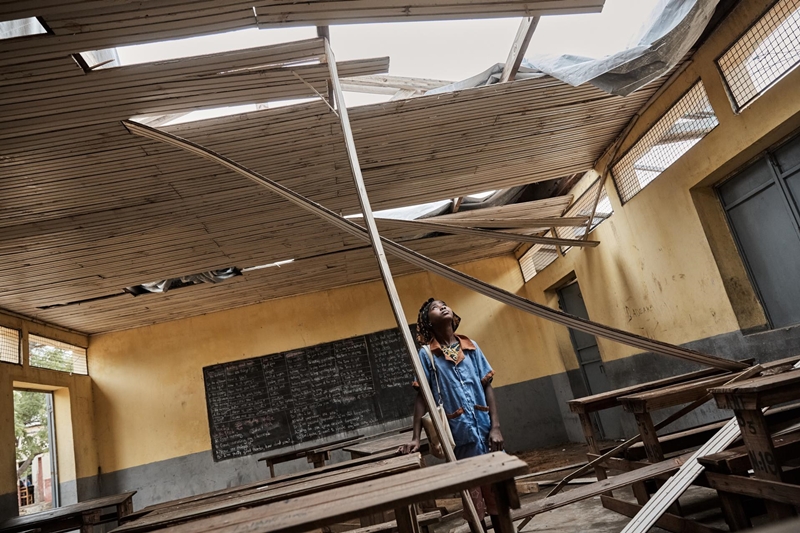
Source: UNICEF
Madagascar is one of the 46 LDCs listed by the United Nations.
―
Q. Which countries are included in the list of LDCs?
―
A. In 2023, there are 46 least developed countries (LDCs), 43 of which are in Africa. The only non-African countries are Afghanistan and Yemen in Asia and Haiti in the Americas. This explains why international aid and assistance are so heavily focused on Africa.
Countries listed as LDCs by the UN as of March 2023
⦁ Africa (33): Angola, Benin, Burkina Faso, Burundi, Central African Republic, Chad, Comoros, Democratic Republic of the Congo, Djibouti, Eritrea, Ethiopia, Gambia, Guinea, Guinea-Bissau, Lesotho, Liberia, Madagascar, Malawi, Mali, Mauritania, Mozambique, Niger, Rwanda, Sao Tome and Principe, Senegal, Sierra Leone, Somalia, South Sudan, Sudan, Tanzania, Togo, Uganda, and Zambia
⦁ Asia (9): Afghanistan, Bangladesh, Bhutan, Cambodia, Lao People's Democratic Republic, Myanmar, Nepal, Timor-Leste and Yemen
⦁ Caribbean (1): Haiti
⦁ Pacific (3): Kiribati, Solomon Islands and Tuval
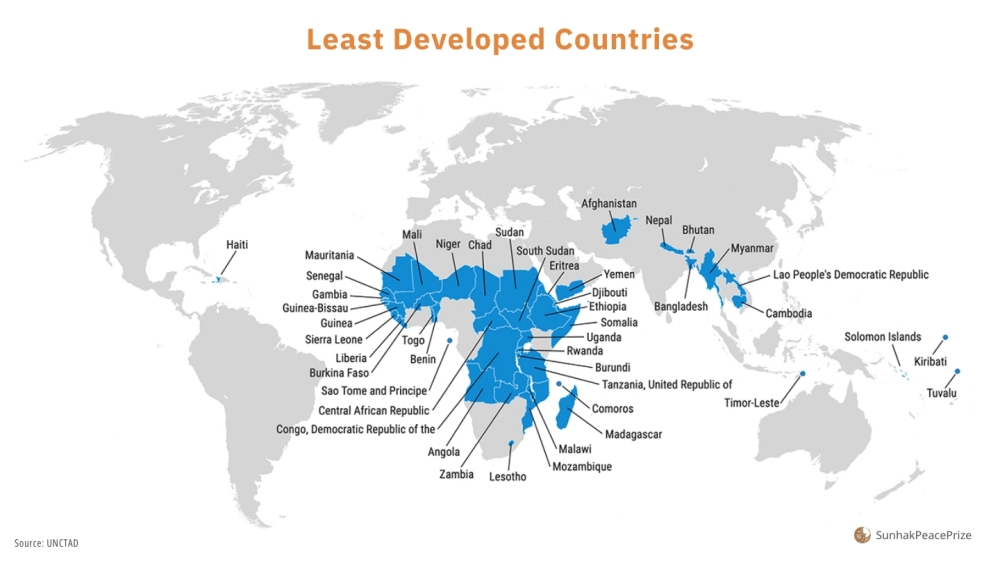
Source: United Nations (October, 2022)
―
Q. What are the criteria to be included as LDCs?
―
A. Least Developed Countries are identified based on the following three criteria.
● LDC Identification Criteria
1. Gross National Income (GNI) per capita of 1,018 USD or less
2. Human Asset Index (HAI) score of 60 or less
3. 36 or above on the Economic and Environmental Vulnerability Index (EVI)
The category of LDCs was established by the United Nations General Assembly in 1971 to identify the most vulnerable and disadvantaged member states and provide them with special international support.
The UN Economic and Social Council reviews the list of LDCs every three years, and countries can graduate from the list if they meet the thresholds.
● Gross National Income (GNI) per capita
GNI per capita is an indicator of income status and the overall level of resources available to a country. The World Bank measures and publishes GNI per capita to identify low-income countries.
● Human Assets Index (HAI)
The HAI is a measure of human capital levels, with lower values indicating less human capital development.
The HAI indicates the level of "health" and "education" of the people and considers six factors: under-five mortality rate, maternal mortality ratio, prevalence of stunting, secondary school completion rate, adult literacy rate, and gender parity index for secondary education completion.
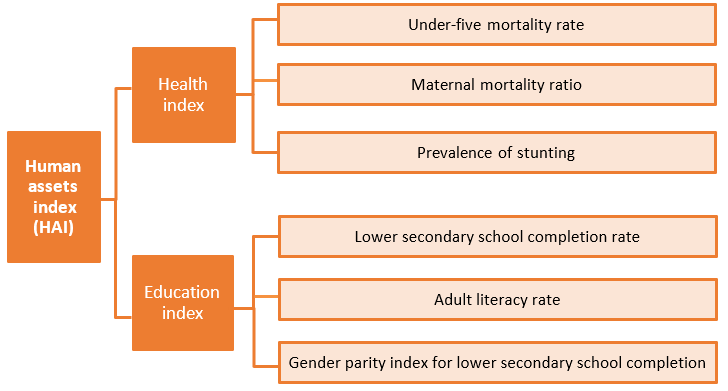
● Economic and Environmental Vulnerability Index (EVI)
The Economic and Environmental Vulnerability Index (EVI) is a measure of structural vulnerability to economic and environmental shocks, with higher values indicating greater economic vulnerability.
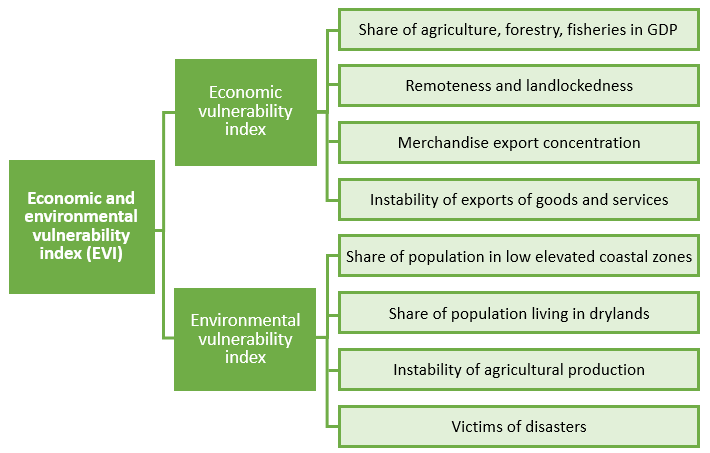
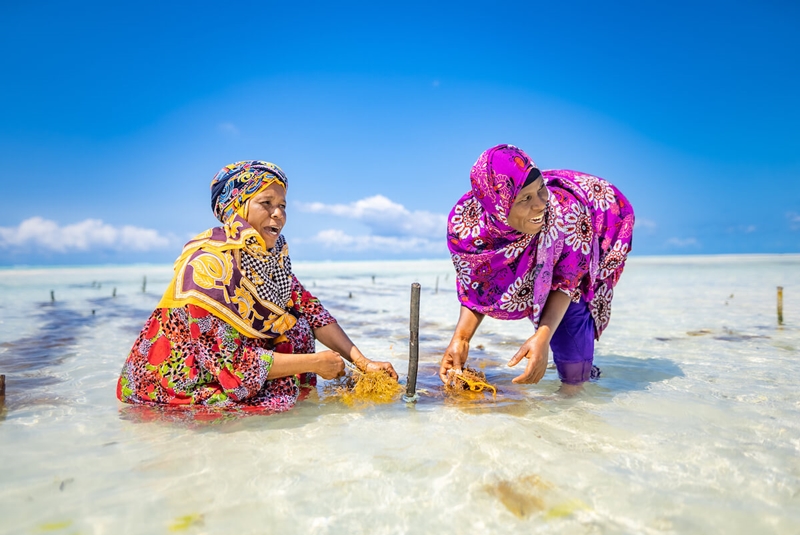
Source: UN Women
Women in Tanzania, a country included in the LDCs, harvest seaweed as part of a climate smart agriculture project.
―
Q. Criteria for Graduation
―
A. To graduate from the Least Developed Country (LDC) category, a country must meet at least two of the following three criteria in two consecutive triennial reviews.
● Criteria for graduating from the LDC category
1. Gross National Income (GNI) per capita of $1,222 or more
2. Human Asset Index (HAI) score of 66 or higher
3. Economic and Environmental Vulnerability Index (EVI) score of 32 or less
Between 1994 and 2000, a total of six countries graduated from Least Developed Country (LDC) status.
Countries Graduated from the LDC Category (Year of Graduation)
Botswana (1994)
Cape Verde (2007)
Maldives (2011)
Samoa (2014)
Equatorial Guinea (2017)
Vanuatu (2020)
While “graduating” from the Least Developed Country (LDC) list is a key milestone in the development progress of a country, it also means it’s no longer eligible for LDC-specific benefits. How effectively the country has been using the benefits before graduation will affect its self-self-sustainability.
―
Q. What Challenges do LDCs face?
―
A. Least developed countries (LDCs) are home to almost one billion people, or more than 10% of the world's population, and they face the following challenges.
● Rising poverty
LDCs are most vulnerable to external economic shocks, natural and man-made disasters, epidemics and climate change, perpetuating a vicious cycle of poverty.
● Vulnerable to climate change
The planet is projected to warm by about 2.7°C above pre-industrial levels, according to the Least Developed Countries Report released by the United Nations Conference on Trade and Development (UNCTAD) in 2022. The LDCs have contributed the least to carbon emissions but are suffering the most from climate change.
As of 2019, the LDCs were responsible for less than 2% of global greenhouse gas emissions, yet they accounted for 50% of global deaths from climate-related disasters over the past four years.
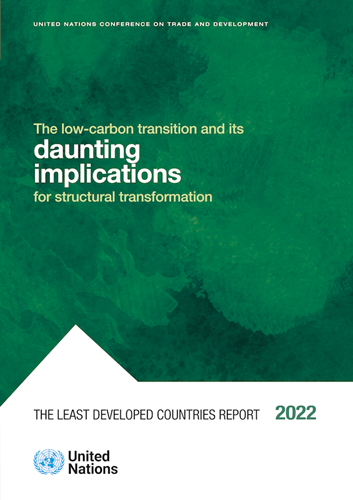
The Least Developed Countries Report 2022
● Lack of access to healthcare
Least developed countries are most affected by COVID-19. In 2020, 38 of the LDCs recorded negative growth rates, and the impact is expected to last much longer in LDCs than in wealthier countries.
● Debt distress
Debt is a key challenge for all least developed countries. Malawi, São Tomé and Príncipe, Zambia, Somalia, Sudan, Grenada, Mozambique, Zimbabwe, and the Democratic Republic of the Congo are debt distressed. In addition, a number of countries, including The Gambia, Kenya, and Lao PDR, are classified to be at high risk of debt distress, meaning that they need urgent debt management.
Find out more about debt-ridden countries (World Bank)
―
Soon to Graduate!
A Sign of Hope
―
What do the following countries have in common?
Angola (2024)
Bangladesh (2026)
Bhutan (2023)
Lao People's Democratic Republic (2026)
Nepal (2026)
São Tomé e Príncipe (2024)
Solomon Islands (2024)
That's right, they're on the verge of graduating from the Least Developed Country (LDC) cateogry.
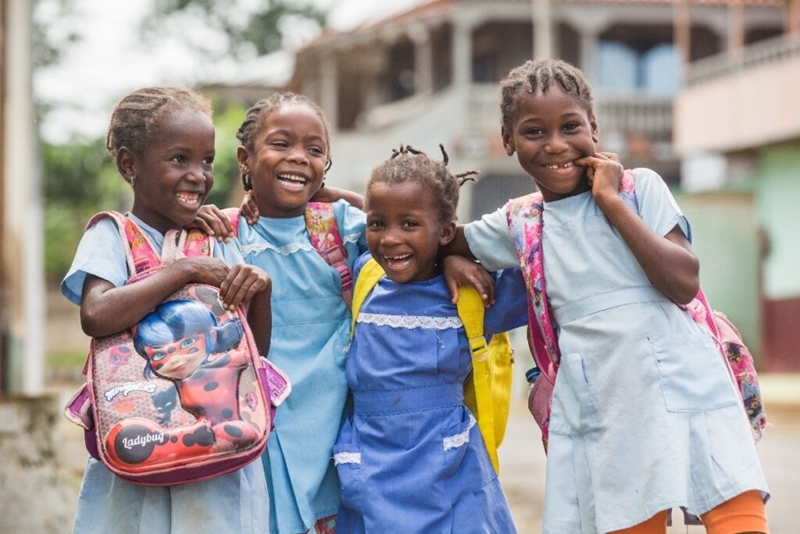
Source: United Nations
Young girls walk home from school in São Tomé and Príncipe.
São Tomé and Príncipe is on track to graduate as a Least Developed Country (LDC) in 2024, but many challenges remain. While São Tomé and Príncipe has performed well on social indicators such as GDP per capita, it has yet to meet the graduation criteria on the Economic and Environmental Vulnerability Index (EVI) and is working on it.
Nepal has also recently improved its economic situation and is on track to graduate from the list in 2026.
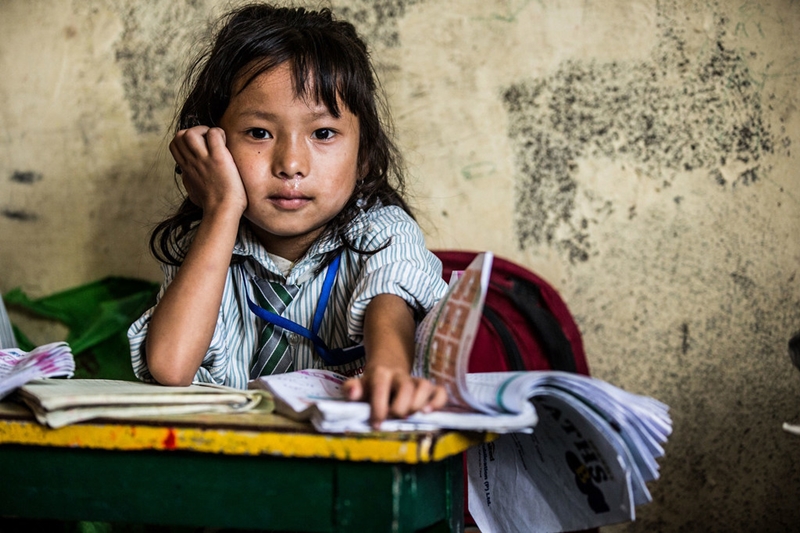
Source: United Nations
A girl studying at a classroom in Nepal.
Nepal was first included in the LDCs category in the 1970s, when the country had a gross national income of just $70 for more than 60% of the population.
But 50 years later, the situation in Nepal has changed dramatically. In 2020, poverty had fallen to 17%, and in 2022, the level of hunger (measured by the Global Hunger Index) was reduced from 'severe' to 'moderate.' Nepal also made significant progress in health and education, successfully achieving gender parity in school enrollment targets in 2019, and significantly reducing the under-five mortality rate to 28 per 1000 live births.
We cannot promote peace by avoiding inequality and poverty.
A war costs astronomical amounts of money. Poverty, which is often the root cause of war, can be resolved with a much less amount.
By helping the LDC countries to ensure that all 48 countries can graduate from the category, we will be one step closer to ending the war on poverty.
“To embrace the future,
we must expand the scope of vocations that can herald the coming of peace.
Even though we may never meet our descendants, we must make sure that all their activities will harmonize in peaceful societies and nations.”
-Dr. Hak Ja Han Moon
Founder of Sunhak Peace Prize-
Learn more: |
Written by Sharon Choi
Director of Planning
Sunhak Peace Prize Secretariat
Translated by Hyang Oh

